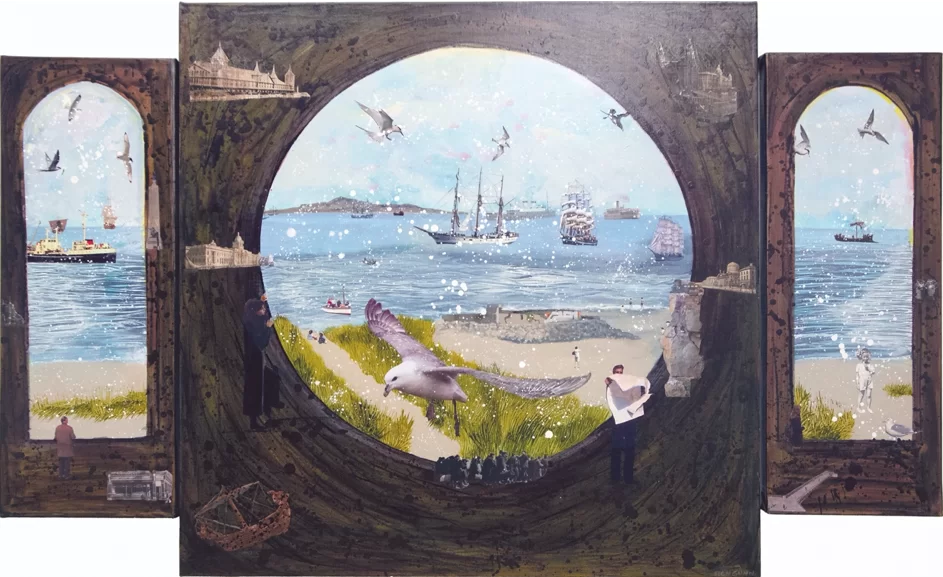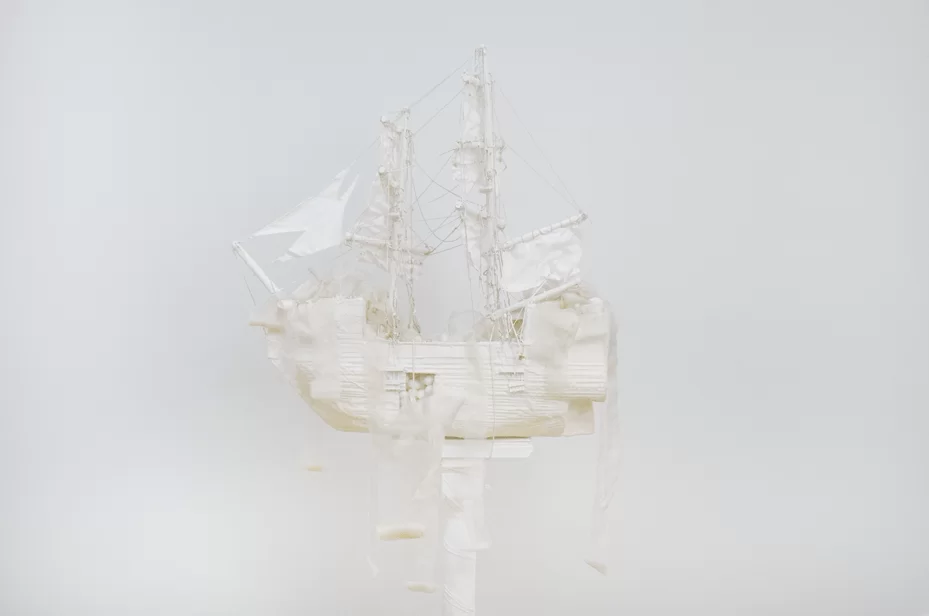Fion Gunn describes the focus of her latest solo show ‘Young Gunn’ as “the Odyssey of human life: across time, across place, and across media”. The artist’s portfolio is filled with sculpture, new VR video additions, and thought-provoking collage layered over painterly landscapes and portraits using printed images and realia. T
ravels between her original Ireland and China, where she often exhibits, are a theme seen throughout the show, with herself as both an example and witness of the development of trade between the East and the West. Her work is both well executed and conceptually gripping. So why has she been met with so many barriers to commercial success?

Dublin Bay Triptych – Fion Gunn
Working with Fion over the past two weeks of “Young Gunn” I’ve been lucky enough to talk to her in depth about her career. It would seem that artist’s struggle to find UK representation and a strong collector-base is a classic case of the ‘misogynageism’ of the art market.
Many gallerists specify that they are only looking for up-and-coming , young talent when it comes to adding artists to their books, and this rules-out Gunn who has been making art for the past 40 years. Gunn speaks to me about how this time in her career has been spent acquiring the skills and “idea-base” needed for her work. Being an artist, for her, is an ongoing educational experience – “what do they think I’ve been doing? Sat on my arse? I can’t bear the attitude I come up against… do they think I’ve waited to this age to try doing stuff?”.

Age of Exploration: Slaves to Silk – Fion Gunn
This ageism in the art market is often most acutely felt by women artists. Gunn recounts how when she and her female peers were ‘up-and-coming’ in the 70s in Ireland they were “completely ignored”, and now that women artists are finally getting a look-in, they’ve “missed the boat”. 40 years deep into her career, Gunn is oh-too-aware that she would be deemed “in her prime” were she male: so much so, that she recounts to me the multiple times in her career when she considered creating under a male pseudonym in order to be taken more seriously.

Fishing without my Father – Fion Gunn
Gunn additionally points out the lack of mentoring for female artists that she experienced as a student both in Ireland and France. The obstructionism of women not being taken seriously, has followed Gunn her entire life, recalling male supervisors who would query “why women went to art college because they all end up being primary school teachers”.
We discuss this “terrible complacency” and its roots. Describing the Spice Girls as a “marketing ploy” which failed to truly redress “basic inequalities for women”, Gunn speaks of the false-equalities of the art world for women, and how “pretend political correctness obfuscates the reality underneath”. We talk about the Luxembourg Art Prize, a competition which boasts of how it receives entries from all ages and backgrounds, but up until 2019, all four winners of the prize were Caucasian men born between 1962 and 1989: “they could be brothers, they even have the same hairdos!” cries Gunn.

Age of Exploration: Spice Box – Fion Gunn
Gunn praises Tate for their proactive attempts to rebalance their collections and the artists they support, but acknowledges that this “doesn’t really filter down on the commercial level”. She tells me about how, when asked why so few women featured in his roster, the gallerist Laurenz Helbling (ShangArt, Shanghai) explained to Gunn how “women artists are very hard to find”. “They’re not” retorted Gunn “it just takes a little bit of effort and imagination”. “Consistent top-down pressure” is what Gunn pinpoints as the way forward, combined with a dismantling – or certainly a reconfiguring – of the ‘cliquery’ of the art market.
Fion Gunn’s “Young Gunn” runs until the 17th of November at Candid Arts Trust.
©2019 Fion Gunn



